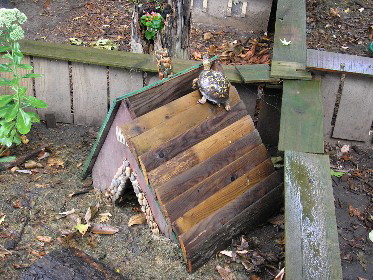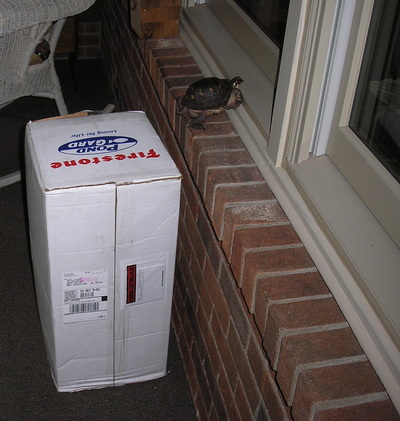Box Turtles
North American box turtles belong to the genus Terrapene which is also their
scientific or Latin name. There is another group of box turtles in Asia from the
genus Cuora. We have focused on the most common subspecies of box turtles
in the USA. These box turtles range from southern Maine to the south Florida Keys,
west to Michigan, Illinois, Kansas, and Texas. In total, there are approximately
14 subspecies of box turtles. When keeping adult box turtles, separate pens
should be set up for each subspecies to prevent cross breeding.
Terrapene Carolina Carolina - Eastern box turtle
Terrapene Carolina Triunguis - Three toed box turtle
Terrapene Carolina Major - Gulf Coast box turtle
Terrapene Carolina Bauri - Florida box turtle
Terrapene Ornata Ornata - Ornate box turtle
Terrapene Ornata Luteola - Desert box turtle
They are identified by their high domed top shell, called a carapace. The colors
of the carapace vary from dark brown to medium brown. They can be marked
with yellow, orange or brown streaks or flecks. Their bottom shell, called a plastron,
has a hinge that allows the turtle to close up very tightly. This is significant
for them as it is a defense mechanism for them to protect themselves from
predators. The plastron can be dark in color, some plain and others with
yellow markings. The hinge across the plastron enables the turtle to
withdraw deep into its shell and close up, which is one reason these turtles
are called Box Turtles. There are other species of turtles that also have hinges.
Males have a concavity to their plastrons whereas a female has a flat plastron.
The males have a thicker tail than a female and usually have red eyes. I have
seen some females with red eyes but the usual color is brown. Some prefer forests
while others prefer marshy areas. Others prefer semiarid grassy areas. Their diet includes
worms, bugs, snails, beetles, vegetables, flowers, and berries.
Indiana has specific regulations regarding owning a box turtle. Click here for more information.
Box turtles are excellent climbers



